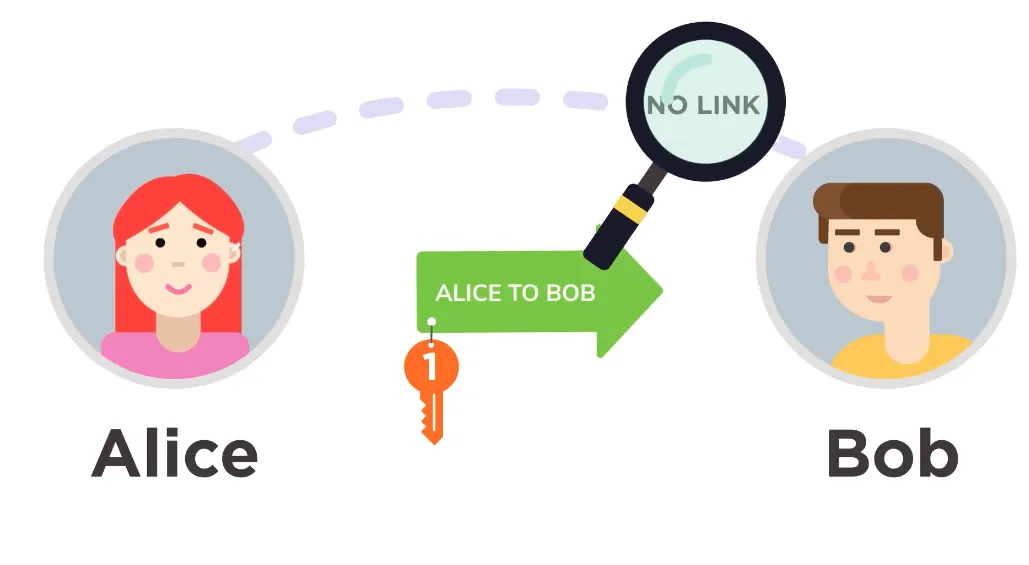This article will cover Monero (XMR) and the amazing features that make Monero such an awesome cryptocurrency. These features include high security, privacy, untraceability, and fungibility, making Monero the perfect balance between security and anonymity/privacy.

Security
Monero is very secure, and is based on the same security principles behind Bitcoin. The XMR network works on decentralized distributed consensus technology, meaning if someone wanted to attack the network, there wouldn't be a centralized place to attack.

Banks, unlike decentralized digital currencies, provide centralized locations hackers and robbers could attack. However, with decentralized digital currencies and distributed consensus, there's no central place an attacker could target. This means that the owner is completely responsible for their money, and that they don't have to trust anyone to safeguard their funds.
Privacy/Anonymity
The original Bitcoin blockchain was and is very secure, however transactions aren't private. The blockchain is fully public, meaning anyone with access to the Internet can view your transaction data, including the sender, receiver, and amount transacted.

Monero, however, is different. Monero uses "view keys" and other technology to keep your transaction data private, while still maintaining the blockchain security.
Untraceability
There are three basic components of a transaction: the sender, the receiver, and the amount. Monero uses different cryptographic technologies to hide all three parts.
Sender Privacy: Ring Signatures
Monero uses ring signatures making whether funds have been spent or not ambiguous. Furthermore, this makes it very unlikely that a transaction could be associated with a user.

The ring signature works somewhat like a joint bank account, where any person authorized in the joint bank account could send a transaction, though it's unknown which person did so. Basically, the actual sender's one-time spend key and transaction are added to multiple decoys (from past transaction data) to form a ring. To an outside third-party viewer, it's impossible to accurately tell which one is the real sender.
Also, to make sure that this technology is not being wrongly used to double-spend XMR (spend the same money twice), Monero uses key images. Key images are derived from outputs and are part of all ring signature transactions, though there can be only one Key Image per output in existence, yet the two can't be linked to figure out which output created which Key Image. The blockchain maintains a list of all used key images, allowing miners to make sure the same XMR is not used twice.
Receiver Privacy: Stealth Addresses
Monero also protects the receiver's privacy using stealth addresses. The receiver's one-time public key is generated based on his public view key, public spend key, and some random data to make it a unique public key. The one-time public key can be seen by anyone on the blockchain, but only the transactors know the transaction details.

Once the receiver finds the transaction using his private view key, he can calculate the one-time spend key corresponding to that one-time public key to spend his funds.
Amount Privacy: Ring Confidential Transactions (RingCT)
Before RingCT was activated (in the beginning of this year), third-parties could see the amounts being transacted in Monero transactions. However, with RingCT (Ring Confidential Transaction), the amount of XMR sent is also hidden from view. RingCT is currently used on over 95% of Monero transaction, and in September RingCT will be mandatory for all Monero transactions.
In this way, transactions are private end-to-end, so they can't be linked to the sender or the receiver from a third-party, and the amount is hidden as well.
Fungibility
Monero is fungible, meaning that 1 XMR is always equal to 1 XMR; each coin is indistinct from another. This also means that your Monero can't be tainted by the use of previous owners, and can't be blacklisted/rejected by vendors or exchanges because every Monero looks and is the same to them.

Monero's privacy and untraceability provide fungibility between coins, meaning that you can accept any Monero without worrying that it was tainted from a previous owner.
Conclusion
Though there are many great cryptocurrencies out there (including one of my favorites, Bitcoin), Monero is one of the greatest, due to having features that no other crypto has managed to have. Monero boasts strong blockchain security combined with amazing privacy for all transactions, and all Monero coins are untraceable and fungible. Some other features of Monero include ASIC-resistant proof-of-work meaning that ASICs can't dominate the mining force (which leads to unhealthy miner centralization). It also has a dynamic block size and fees that change based on network conditions (though XMR doesn't have a hard blocksize limit, the growth of the soft limit is capped to prevent outrageous growth).
Monero recently went through a huge surge when an exchange announced XMR services, and it's currently trading at above $130 with a market cap of almost $2B (9th rank). I strongly believe in Monero and its success, and I advise you to learn more about how Monero works on websites such as GetMonero.org.
If you liked this article, please make sure to upvote/resteem/follow :)
Thanks for reading,
— @mooncryption
note: The main difference between Bitcoin and Monero is that Bitcoin keeps all transaction data public and transparent, while Monero keeps all of that private and anonymous.
credits: The first image (main front image) is from the Monero website (getmonero.org) and is edited by me. The second and third are from Google Images, while the rest are from the Monero YouTube channel.